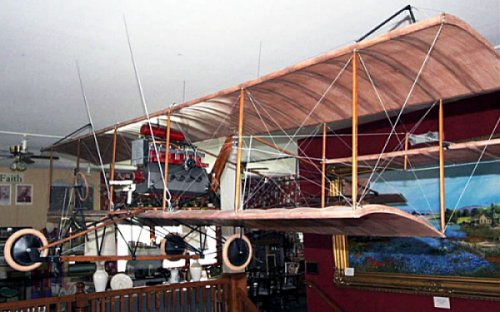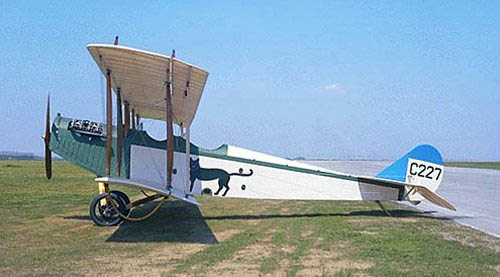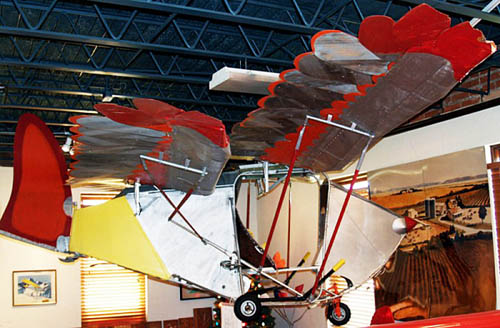Old Soggy No. 1
Today, Texas' first aeroplane. The University of Houston's College of Engineering presents this series about the machines that make our civilization run, and the people whose ingenuity created them.
Well now, naming Texas' first aeroplane could be a mighty fine way to start a fight. Quite a few were built. Some even got off the ground before they crashed. My favorite is the Reverend Burrell Cannon's attempt to make an Ezekiel Wheel aeroplane, based on the description in the Bible.
Attempts were made before and after the Wright Brothers. At the 20th-Century Technology Museum in Wharton, Texas, is Farmer Grawunder's homemade Ornithopter. He actually applied for, and got, a patent on it during WW-II. Of course, this surreal contraption of plywood, bicycle parts, and household items never flew. But it's the only surviving example of such a thing that I've seen.
To the best of my knowledge, the first successful attempt was the plane Slats Rogers began in 1911 and flew a year later. Rogers was born in 1889. At eighteen, he found work with the railway -- eventually working up to the post of engineer. A locomotive tearing down the track was heady wine -- almost like flying. But fly, it would not. And Slats Rodgers wanted to fly.
He'd already built a large model aeroplane. Then, in a Keene, Texas, machine shop, he set about to build a real thing. You can read details in his autobiography, Old Soggy No. 1. He called it that because, once finished, its right wing drooped.

Once he had it together, he did a lot of taxi testing. He finally lifted into the air only because he had to: He found himself headed toward a pothole and lifted off to save Old Soggy. He flew her maybe fifty times. He'd crash, rebuild, then fly again. He looked for ways to make money with her, failed to do so, and finally gave up. He never did build Old Soggy No. 2.
In 1916, the Army began hiring civilians to train pilots. By then, they were using the Canadian version of the Curtiss Jenny -- a plane called the Canuck. The Army showed Slats Rogers how to fly it, then put him to work as an instructor. That didn't last long. The Army soon had its own flight instructors. Indeed, one of them taught my father to fly a Jenny in Louisiana, two years later.
So Rodgers turned to barnstorming and rum-running. He flew passengers -- five minutes for five dollars. If they started checking the time, he'd do a few stunts and scare them away from their watches. He also began running booze in from Mexico. After the war, with Prohibition, moving liquor became his major business.
The game went on -- barnstorming, rum-running, wild women. He was the first person licensed to fly in Texas -- and the first to have his license revoked. He spent time in hospitals and in jails. But all good things have to come to an end, I suppose.
Prohibition ended, flight became civilized, and Rogers bought a ranch. Then he ran steak houses and a fisherman's camp. He died at 67 -- nine years after Chuck Yeager broke the sound barrier and only a year too soon the see the first orbital satellites.
I'm John Lienhard, at the University of Houston, where we're interested in the way inventive minds work.
H. Stilwell and S. Rogers, Old Soggy No. 1: The Uninhibited Story of Slats Rogers. (New York: Arno Press, Inc. 1972). I am most grateful to Frank Smith for this copy of Rogers' book).
For more on Slats Rogers and old Soggy, click here.
The images of the half-size replica of Old Soggy No. 1 in the Hopps Museum at the Southwest Adventist University in Keene, Texas were kindly taken for me by David Phillips at SAU. Images: Text above: Front view of the Old Soggy No. 1 replica showing its drooping right wing. Below: Top: Old Soggy No. 1 replica, Middle: A JN-4(Can) Canuck (courtesy of the Canadian Air Force) Bottom: Grawunder's Ornithopter/Glider (20th-C Technology Museum, photo by JHL)


